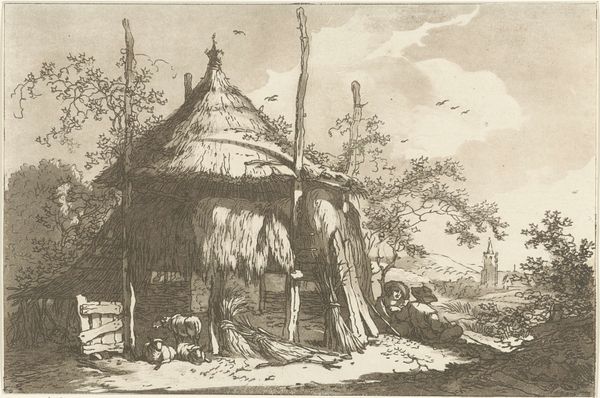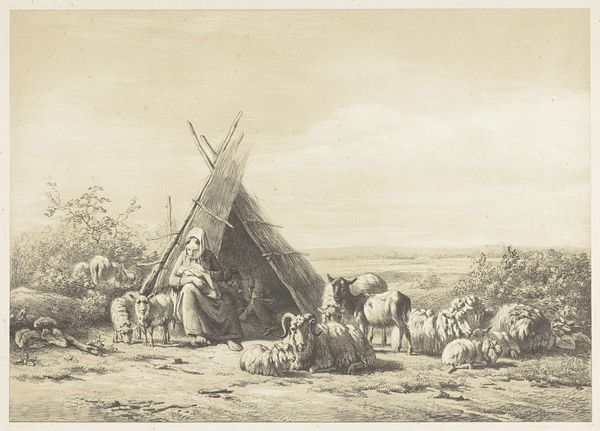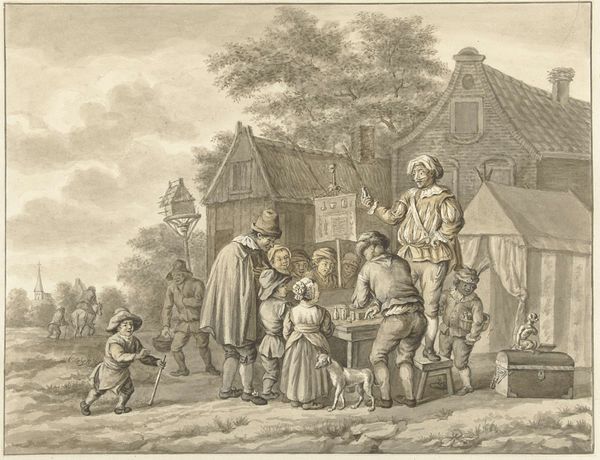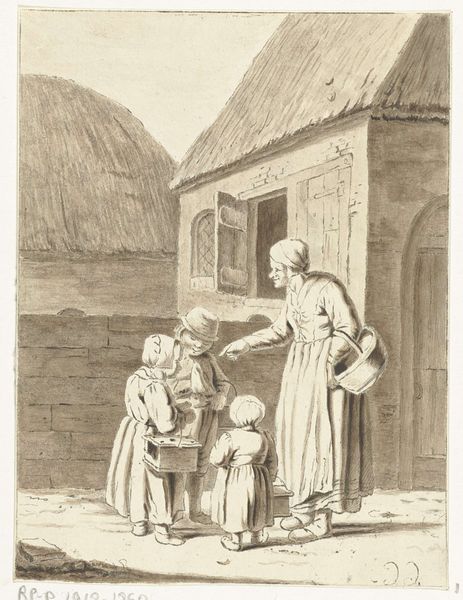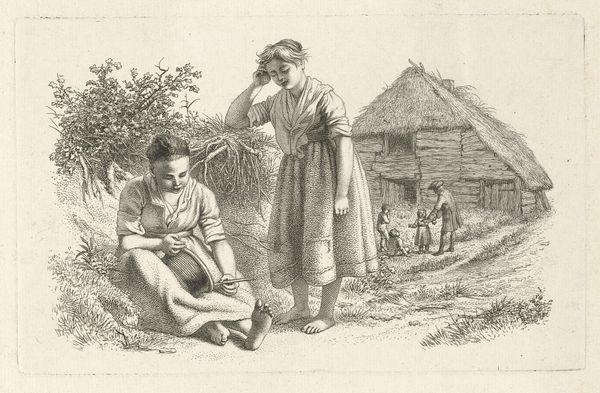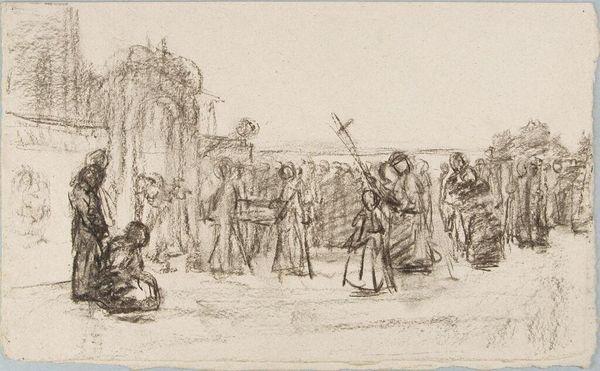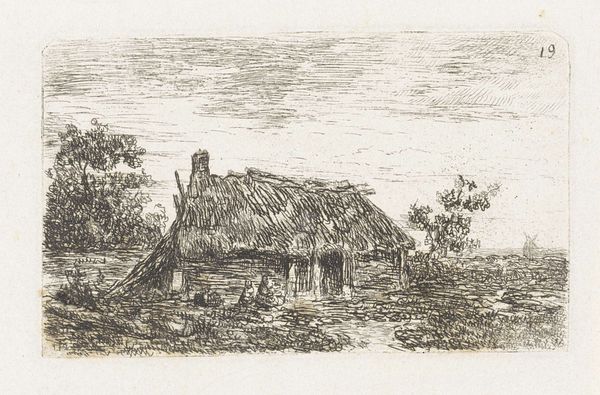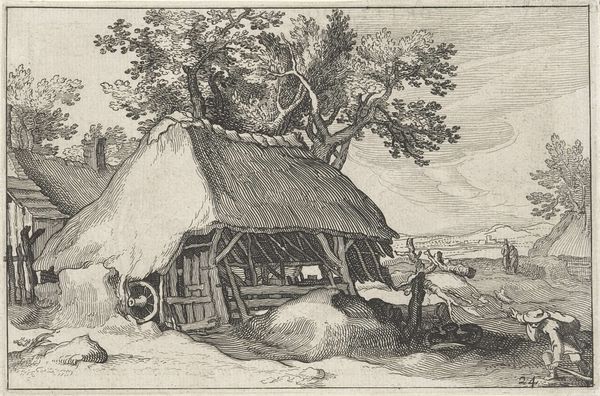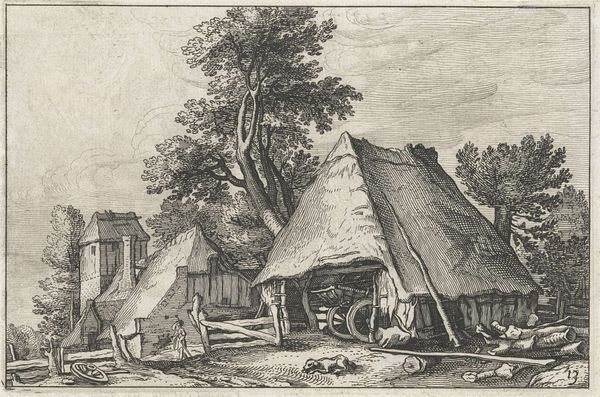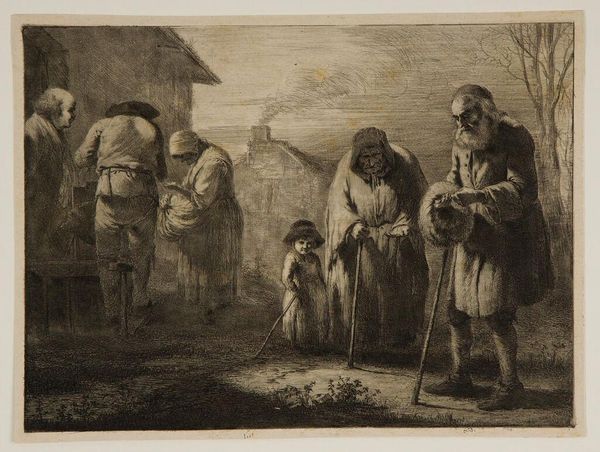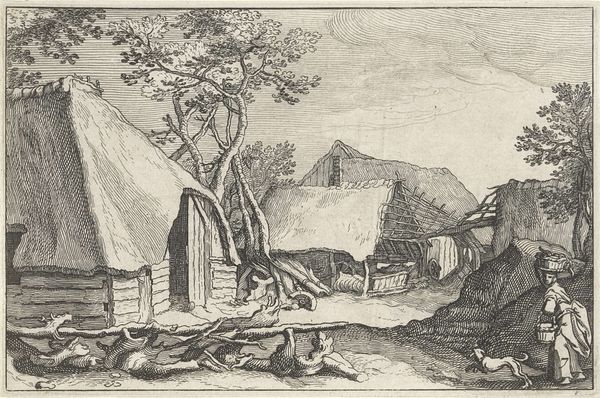
drawing, paper, pen
#
drawing
#
quirky sketch
#
pencil sketch
#
landscape
#
figuration
#
paper
#
personal sketchbook
#
idea generation sketch
#
sketchwork
#
romanticism
#
pen-ink sketch
#
line
#
sketchbook drawing
#
pen
#
genre-painting
#
storyboard and sketchbook work
#
fantasy sketch
#
initial sketch
Dimensions: height 149 mm, width 233 mm
Copyright: Rijks Museum: Open Domain
Editor: Here we have Jacob Ernst Marcus's "Company Before a Farmhouse," a pen and pencil drawing on paper, dating from about 1813-1819. It has an interesting sketchy quality that feels really immediate. What's your take on this piece? Curator: This work is interesting when we consider the materials and the production of imagery in early 19th century Netherlands. Paper, pen, and pencil, easily transportable and relatively inexpensive, allowed artists like Marcus to record scenes of everyday life. The accessibility of these materials speaks volumes about a changing art market, moving away from solely aristocratic patronage. Editor: So, you are saying the shift to drawing on paper reflected larger social and economic changes? Curator: Precisely. The rising middle class sought art that reflected their own lives and values. Drawings, unlike large-scale oil paintings, were more affordable and could be displayed in the home. Consider also the labor involved: drawing allows for a quicker capture of a scene, potentially directly from life. What do you make of the thatched roof and roughly hewn timbers of the barn itself? Editor: They strike me as deliberately rustic, perhaps even romanticized. It almost seems like the artist is making the point to highlight the material contrast between these working class objects and the bourgeois patrons on the right side of the work. Curator: A keen observation. It emphasizes the consumerist relationship the subjects in the artwork have with the objects and labor surrounding the farmhouse. Perhaps this burgeoning middle class admired this lifestyle and consumption practices from afar, thus making the scene a trendy artistic theme at the time? Editor: I never considered that. It really contextualizes the artistic process of the artist and the patron in early 19th century Netherlands. Curator: Exactly! By looking at the materials and social context, we gain a deeper understanding.
Comments
No comments
Be the first to comment and join the conversation on the ultimate creative platform.
